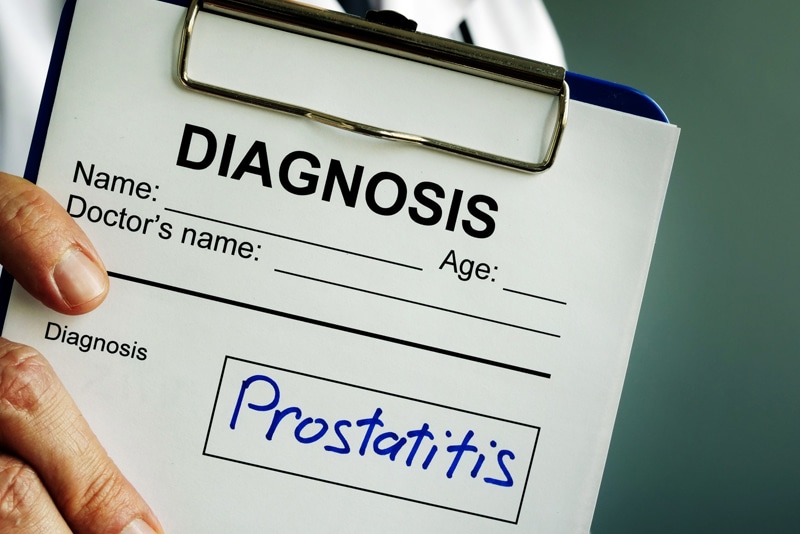A chronic and painful condition, which is common among men of all age groups, prostatitis refers to swelling and inflammation of the prostate gland. Prostate gland is a walnut-sized gland situated below the bladder and in front of your rectum which produces fluid (semen) that nourishes and transports the sperm. Prostatitis tends to be more common among men under the age of 50. It accounts for nearly 2 million visits per year to outpatient urology practices in the United States. In fact, two to twelve percent of all men experience prostatitis symptoms. Painful or difficulty in urination is one of the most common symptoms associated with the condition. Prostatitis is caused by a number of reasons, which include infection, inflammation or other related causes. However, in some other cases, the exact causes cannot be identified. Depending on the severity of the causes, the infection may occur gradually or suddenly. Urologists and other specialists can rely on medical billing outsourcing companies to report prostatitis diagnosis and screening accurately.
As there are different types of prostatitis, the exact cause of this condition is not known in certain cases. Common bacterial strains are some of the top causes of this condition. The infection can start when bacteria in urine leak into the prostate. Nerve damage in the lower urinary tract which can be caused by surgery or trauma to the area may also contribute to the condition. Antibiotics are normally used to treat the infection. If left untreated, the condition could lead to severe complications like – bacterial infection of the blood (bacteremia), prostatic abscess (pus-filled cavity in the prostate), epididymitis (inflammation of the coiled tube attached to the back of the testicle) and semen abnormalities and infertility issues.
Types of Prostatitis
The National Institute of Health (NIH) classifies prostatitis into four different categories –
- Acute bacterial prostatitis – This is a sudden bacterial infection caused by the inflammation of the prostate. This is the least common form of prostatitis which typically starts suddenly and may include flu-like symptoms.
- Chronic bacterial prostatitis – The condition is caused by recurrent urinary tract infections that come from bacteria that chronically infect the prostate gland. Symptoms may include burning with urination, urinary frequency, and pain.
- Chronic non-bacterial prostatitis/chronic pelvic pain syndrome – This non-bacterial type may depend upon the presence or absence of infection-fighting cells in the urine, semen, and prostatic fluid. Symptoms include pain (genital, abdominal, pelvic), urinary symptoms, and often erectile dysfunction.
- Asymptomatic prostatitis – Patients with this condition will not experience any specific symptoms or discomfort, but they will have the presence of infection-fighting cells present in semen/prostatic fluid.
Typical Symptoms
People may not experience symptoms suddenly which does not necessitate them to seek immediate emergency medical care. The signs and symptoms of the condition may depend on the causes. Common symptoms include –
- Pain or burning sensation when urinating (dysuria)
- Difficulty urinating, such as dribbling or hesitant urination
- Urgent need to urinate or frequent urination, particularly at night (nocturia)
- Painful ejaculation
- Pain or discomfort of the penis or testicles
- Pain in the area between the scrotum and rectum (perineum)
- Pain in the abdomen, groin or lower back
- Flu-like signs and symptoms (with bacterial prostatitis)
- Cloudy urine
- Blood in the urine
Diagnosing and Treating Prostatitis
If a physician suspects that a patient has prostatitis or any other related problem, he or she may refer them to an urologist to confirm the diagnosis. Urologists, as an initial step, may conduct a detailed physical examination (like digital rectal exam test) to determine the exact causes and rule other similar conditions that may be causing the symptoms. Physicians will also conduct tests to identify what specific type of prostatitis a patient suffers from. Physicians may evaluate the patient’s medical history and other symptoms as well.
Diagnostic tests like – urine tests (urinalysis to look for signs of infection), blood tests (to look for signs of infection and other prostate problems) and post-prostatic massage (in rare cases) may be performed. In addition, imaging tests like CT scan of your urinary tract and prostate or a sonogram of your prostate may be performed. Depending on the symptoms and the diagnostic test results, the physician will determine which type of prostatitis a patient suffers from.
Treatment for prostatitis depends on the underlying causes and symptoms. Common treatment modalities include – antibiotics, alpha blockers and anti-inflammatory agents (non-steroidal anti-inflammatory drugs (NSAIDs). However, some cases of non-bacterial prostatitis respond to treatments as exercise, myofascial trigger point release physical therapy, progressive relaxation, and counseling. Urologists and other specialists offering specialized treatment to prostatitis patients are reimbursed for their services. The diagnosis, screening tests and other procedures must be carefully documented using the appropriate medical codes. Medical billing and coding services offered by reputable providers can help physicians use the correct codes for their medical billing purposes. For billing and coding purposes, physicians must use the following medical codes –
- N41 Inflammatory diseases of prostate
- N41.0 Acute prostatitis
- N41.1 Chronic prostatitis
- N41.2 Abscess of prostate
- N41.3 Prostatocystitis
- N41.4 Granulomatous prostatitis
- N41.8 Other inflammatory diseases of prostate
- N41.9 Inflammatory disease of prostate, unspecified
Prostatitis is often a treatable condition. Patients by clearly following the recommended treatment and medication prescriptions by physicians can manage the condition in the long run. Patients need to follow the full course of the prescription medications, even if they don’t experience any symptoms.
Managing urology medical billing and coding will be much easier for urologists who partner with a medical billing and coding service provider. With a reputable team of AAPC-certified coders and billing professionals to assist them, medical coding and claim submission would be easier and stress free.




